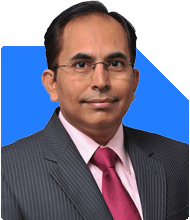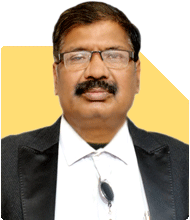Ramalingam Kalirajan |8098 Answers |Ask -Follow
Mutual Funds, Financial Planning Expert - Answered on Dec 09, 2024
He has an MBA in finance from the University of Madras and is a certified financial planner.
He is the director and chief financial planner at Holistic Investment, a Chennai-based firm that offers financial planning and wealth management advice.... more

I am 50 years old and living in India. I plan to retire at 52 by 2026 with a retirement corpus of ?1.5 crore. I intend to use this corpus to withdraw ?50,000 per month through a Systematic Withdrawal Plan (SWP). Assuming no other source of income, I seek guidance on how to allocate my corpus into mutual funds to minimize income tax or nil tax while ensuring steady withdrawals.
Here is a detailed plan to allocate your corpus effectively:
Assessing Monthly Withdrawal Needs
Rs. 50,000 per month equals Rs. 6 lakh annually.
Inflation adjustments over the years will need an increasing withdrawal amount.
Ensuring growth alongside withdrawals is vital to avoid depleting your corpus.
Principles for Corpus Allocation
Divide your corpus into equity, debt, and hybrid funds for stability and growth.
Equity funds deliver long-term growth and beat inflation.
Debt funds ensure stability and generate steady income.
Hybrid funds balance risk and return effectively.
Suggested Allocation Strategy
Equity-Oriented Allocation (50% of Corpus):
Allocate Rs. 75 lakh to equity-oriented hybrid funds or diversified equity funds.
These funds ensure growth and can sustain inflation-adjusted withdrawals.
Withdrawals from equity funds benefit from favourable long-term capital gains (LTCG) tax rules.
Debt-Oriented Allocation (40% of Corpus):
Allocate Rs. 60 lakh to debt-oriented funds, such as short-term or ultra-short-term funds.
These funds offer liquidity and lower risk.
Withdrawals are taxable as per your income tax slab but provide stability.
Emergency Fund and Liquid Allocation (10% of Corpus):
Allocate Rs. 15 lakh to liquid or overnight funds.
Use these funds for the initial 2-3 years of withdrawals.
This ensures the equity portion remains untouched during market volatility.
Tax-Efficient Withdrawal Strategy
Use Systematic Withdrawal Plans (SWP):
Start withdrawals from debt or liquid funds for the first few years.
Switch to equity funds later, allowing them to grow tax-efficiently.
Tax Treatment to Consider:
Equity mutual funds’ LTCG above Rs. 1.25 lakh is taxed at 12.5%.
Short-term capital gains (STCG) on equity funds are taxed at 20%.
For debt mutual funds, both LTCG and STCG are taxed as per your slab.
Benefits of This Allocation
Steady Cash Flow:
An SWP ensures monthly cash flow while keeping your corpus intact.
Liquid and debt funds support predictable withdrawals initially.
Growth with Stability:
Equity funds generate long-term growth to sustain future withdrawals.
Debt funds provide immediate liquidity and safety.
Tax Efficiency:
The tax treatment of equity funds is beneficial for long-term withdrawals.
Debt funds allow for staggered withdrawals, reducing immediate tax burden.
Reviewing Your Plan Periodically
Rebalance your portfolio annually based on market performance and withdrawals.
Increase allocation to debt funds as you age to minimise risk.
Monitor inflation and adjust monthly withdrawals accordingly.
Final Insights
Achieving a tax-efficient withdrawal plan from your retirement corpus is possible. Allocate thoughtfully across equity, debt, and liquid funds. Stick to a disciplined withdrawal plan to ensure corpus longevity. Regular reviews will keep your plan aligned with your goals.
Best Regards,
K. Ramalingam, MBA, CFP,
Chief Financial Planner,
www.holisticinvestment.in
https://www.youtube.com/@HolisticInvestment
Best Regards,
K. Ramalingam, MBA, CFP,
Chief Financial Planner,
www.holisticinvestment.in
https://www.youtube.com/@HolisticInvestment
You may like to see similar questions and answers below
Ramalingam Kalirajan |8098 Answers |Ask -Follow
Mutual Funds, Financial Planning Expert - Answered on Apr 30, 2024
Ramalingam Kalirajan |8098 Answers |Ask -Follow
Mutual Funds, Financial Planning Expert - Answered on Jan 31, 2025
Ravi Mittal |546 Answers |Ask -Follow
Dating, Relationships Expert - Answered on Mar 13, 2025
Janak Patel |21 Answers |Ask -Follow
MF, PF Expert - Answered on Mar 13, 2025
Radheshyam Zanwar |1415 Answers |Ask -Follow
MHT-CET, IIT-JEE, NEET-UG Expert - Answered on Mar 13, 2025
Radheshyam Zanwar |1415 Answers |Ask -Follow
MHT-CET, IIT-JEE, NEET-UG Expert - Answered on Mar 13, 2025
Ramalingam Kalirajan |8098 Answers |Ask -Follow
Mutual Funds, Financial Planning Expert - Answered on Mar 13, 2025
Ramalingam Kalirajan |8098 Answers |Ask -Follow
Mutual Funds, Financial Planning Expert - Answered on Mar 13, 2025
Ramalingam Kalirajan |8098 Answers |Ask -Follow
Mutual Funds, Financial Planning Expert - Answered on Mar 13, 2025
Rajesh Kumar Singh |194 Answers |Ask -Follow
IIT-JEE, GATE Expert - Answered on Mar 13, 2025
Ramalingam Kalirajan |8098 Answers |Ask -Follow
Mutual Funds, Financial Planning Expert - Answered on Mar 13, 2025
Rajesh Kumar Singh |194 Answers |Ask -Follow
IIT-JEE, GATE Expert - Answered on Mar 13, 2025
























